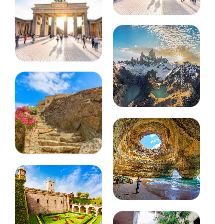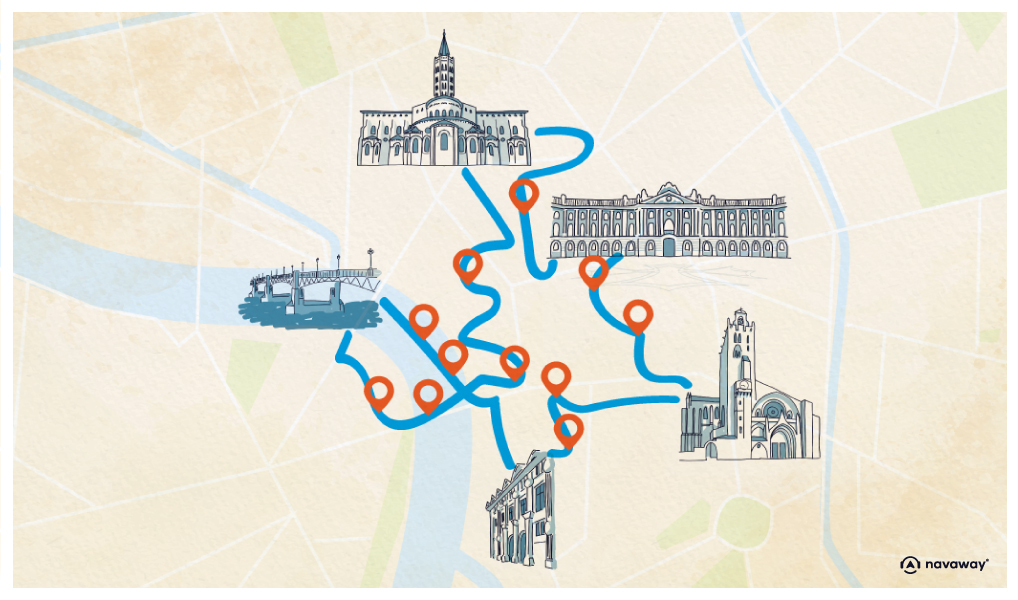
The 18 must-sees to discover Occitania
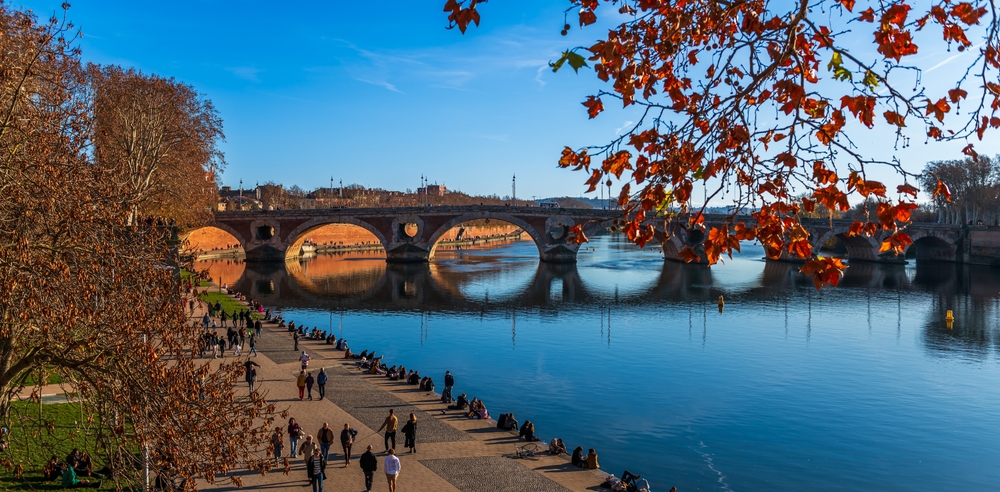
Between the Mediterranean Sea, the Pyrenees Mountains and hilltop villages, Occitanie boasts a rich, contrasting landscape that enchants travellers from all over the world. This region in the south of France, formed from the merger of Languedoc-Roussillon and Midi-Pyrénées, harmoniously combines a thousand years of history, an exceptional heritage and the Mediterranean art of living. From the medieval streets of Carcassonne to the pink hues of Toulouse, from the breathtaking gorges of the Tarn to the beaches of Languedoc, Occitanie invites you on an authentic journey where each stop reveals new treasures. Get ready to discover a region where unesco heritage rubs shoulders with technological innovation, where Occitan traditions live on in a resolutely modern environment.

1. Toulouse, the pink city at the heart of the Occitanie region
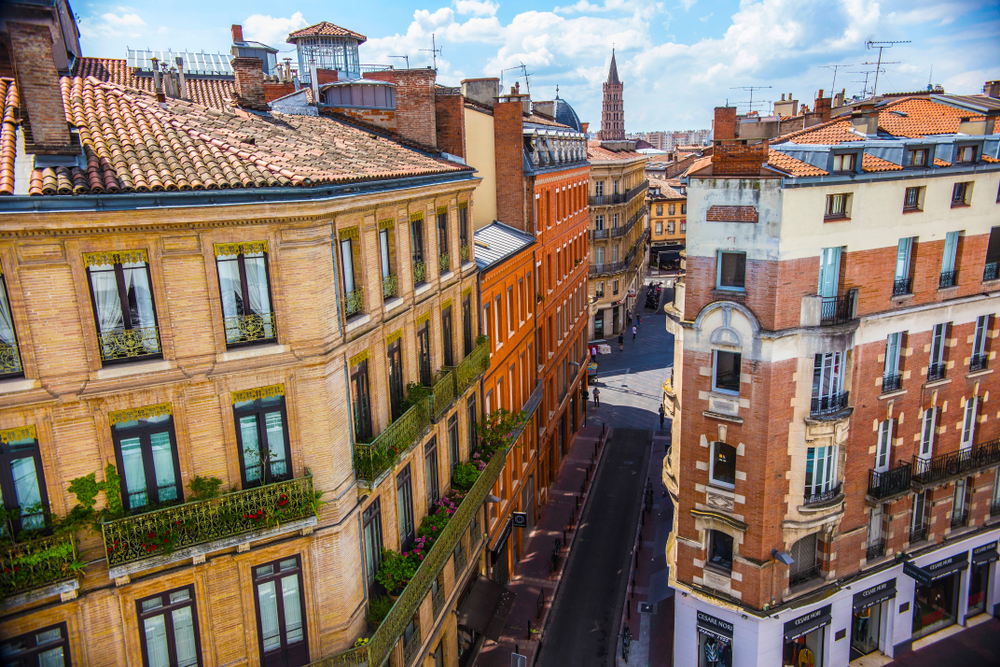
As the capital of the Occitanie region and France’s fourth-largest city, a visit to Toulouse is a must if you want to understand the soul of this region. Nicknamed the “Pink City” because of its terracotta brick facades, Toulouse has an exceptional architectural heritage and a dynamic economy. The Basilica of Saint-Sernin, the largest Romanesque church in Europe, the Capitole with its majestic neoclassical façade, and the Renaissance mansions in the historic quarter all bear witness to the city’s rich past.
Download the audio-guided tour to discover Toulouse on foot and on your own
Explore the secrets of the Pink City with our audio tour of Toulouse, which will take you through 23 emblematic places of interest. From the Place du Capitole to the Basilica of Saint-Sernin, via the banks of the Garonne and the Convent of the Jacobins, discover the fascinating history of this Occitan metropolis while enjoying detailed explanations and captivating anecdotes about each monument you encounter.
Also read the Toulouse guide:
- Activities in and around Toulouse
- Culinary specialities Toulouse
- Top 7 most beautiful villages around Toulouse
- The 8 most romantic hotels in Toulouse
- The 10 best swimming spots around Toulouse
2. Montpellier, the gifted Languedoc region
France’s seventh-largest city, Montpellier boasts a thousand-year-old university and bold contemporary architecture. A visit to Montpellier reveals a young, dynamic city where medieval vestiges and modern creations coexist harmoniously. The Écusson, the pedestrianised historic centre, is home to Saint-Pierre cathedral and its impressive Gothic towers, while the Antigone district, designed by Ricardo Bofill, surprises visitors with its grandiose neoclassical perspectives.
The Promenade du Peyrou offers exceptional views over the city and the nearby Mediterranean. The Halles Castellane (rue de la Loge, 34000 Montpellier, rated 4.2/5 on Google out of 2,400 reviews) is a great place to sample local produce from the Languedoc region in an authentic and friendly setting.
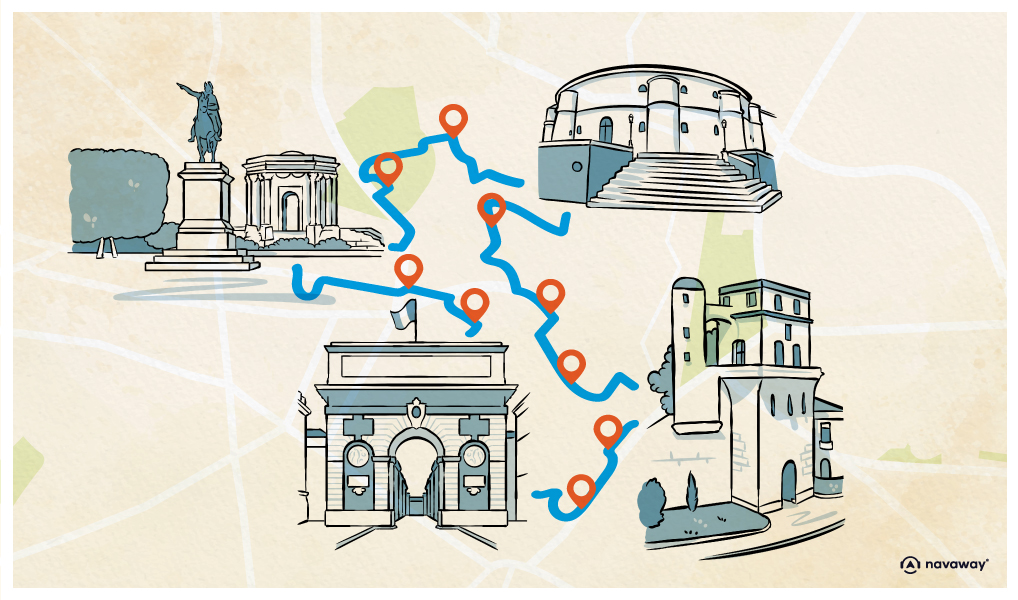
3. Carcassonne, the fortified medieval city
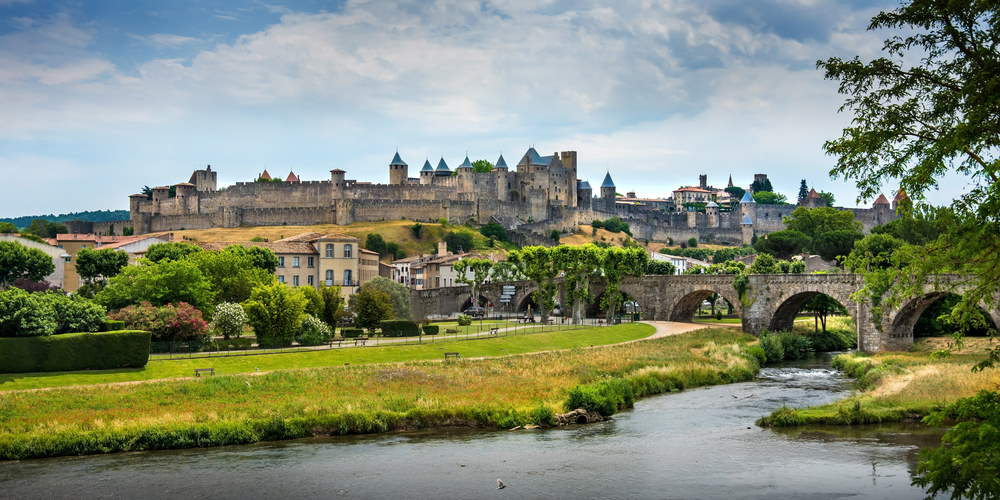
Listed as a UNESCO World Heritage Site since 1997, the city of Carcassonne is one of the jewels of the Occitanie region. A visit to Carcassonne takes visitors back to the heart of the Middle Ages, with its 52 towers and three kilometres of perfectly preserved ramparts. This exceptional fortress, restored in the 19th century by Viollet-le-Duc, majestically dominates the Aude valley.
The château comtal, the Saint-Nazaire basilica with its dazzling stained-glass windows and the cobbled streets of the upper town offer an unforgettable journey through Cathar history. Let yourself be guided by the Navaway itinerary to discover all the secrets of this medieval citadel, unique in Europe.
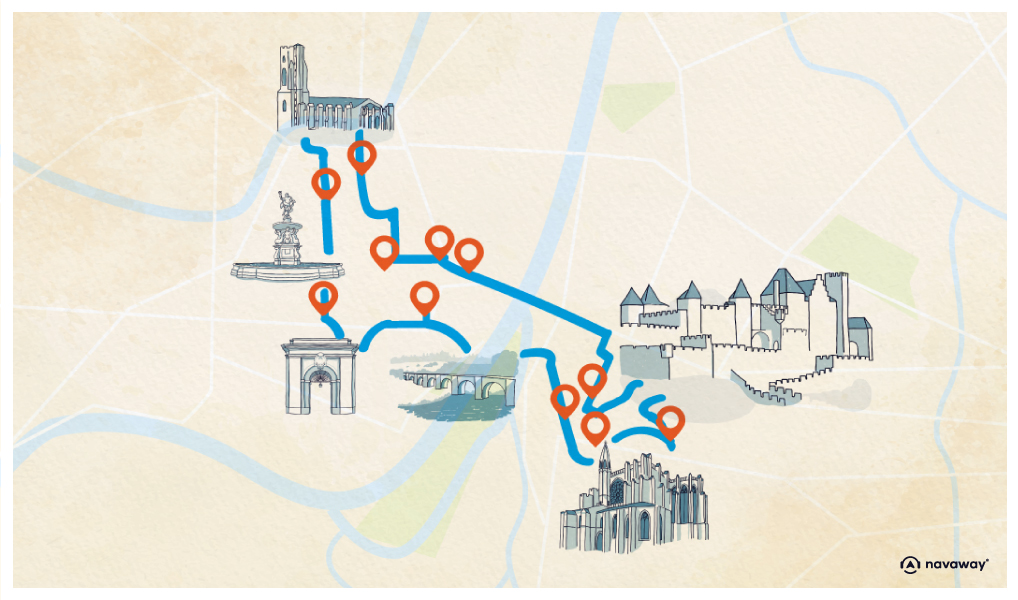
4. Albi, the red city and Toulouse-Lautrec
A UNESCO World Heritage Site, a visit to Albi reveals an exceptional episcopal city dominated by Sainte-Cécile Cathedral. This red-brick fortress, the largest brick cathedral in the world, is home to spectacular Renaissance frescoes and a flamboyant Gothic rood screen that is unique in France.
The Palais de la Berbie, the former residence of the bishops, is now home to the Toulouse-Lautrec museum (place Sainte-Cécile, 81000 Albi, rated 4.4/5 on Google out of 3,200 reviews), which houses the world’s largest collection of works by the Albigensian artist. The old 11th-century bridge and the banks of the Tarn offer romantic views of this timelessly charming town.
5. Nîmes, the French Rome
Heir to an exceptional ancient heritage, Nîmes fascinates visitors with its perfectly preserved Roman monuments. The Nîmes arenas (boulevard des Arènes, 30000 Nîmes, rated 4.4/5 on Google out of 15,800 reviews), a first-century amphitheatre, still host shows and bullfights in a unique authentic setting. The Maison Carrée, a Roman temple dating from the 1st century BC, is one of the best-preserved ancient buildings in the world.
The Gardens of the Fountain, laid out in the 18th century around the sacred ancient spring, lead to the Magne Tower, a vestige of the Roman walls offering a breathtaking panoramic view of the city of Gard. This city of art and history combines a glorious past with a dynamic present.
6. The Canal du Midi, Pierre-Paul Riquet’s masterpiece
Listed as a UNESCO World Heritage Site since 1996, the Canal du Midi is an exceptional technical and architectural feat of the 17th century. This 360-kilometre waterway, designed by Pierre-Paul Riquet between 1667 and 1694, links Toulouse to the Mediterranean by crossing the Naurouze threshold, the watershed between the Atlantic and the Mediterranean.
The Fonseranes locks at Béziers, a veritable staircase of water made up of eight successive locks, are the most spectacular structure on this revolutionary canal. Cruising along this peaceful waterway, lined with two-hundred-year-old plane trees, offers a unique insight into the landscapes of Languedoc and their architectural heritage.
7. The Pont du Gard, a monumental ancient aqueduct
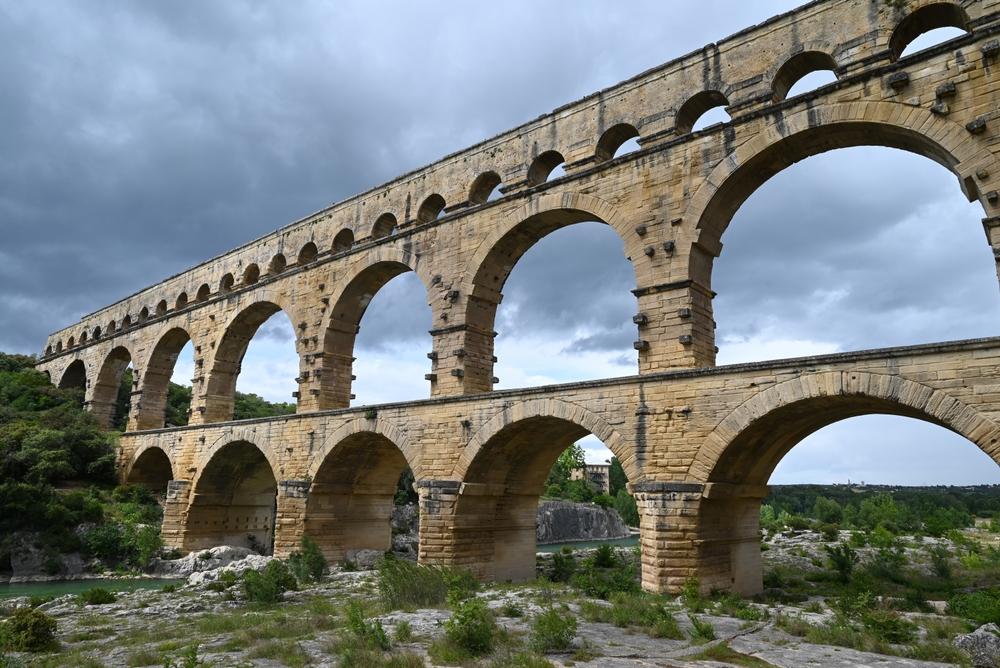
The Pont du Gard is the most visited ancient monument in France, with over a million visitors a year. Its colossal dimensions and architectural beauty are truly impressive. This 1st-century Roman aqueduct, a UNESCO World Heritage site, rises 49 metres above the Gardon river in three tiers of arcades.
275 metres long, this masterpiece of Roman engineering carried water from the springs of Uzès to Nîmes over a distance of 50 kilometres. The converted site features a modern museum (400 route du Pont du Gard, 30210 Vers-Pont-du-Gard, rated 4.2/5 on Google out of 6,500 reviews) retracing the history of this extraordinary construction and of Gallo-Roman civilisation.
8. The Tarn gorges and the Causses
The gorges du Tarn are one of the most spectacular landscapes in Occitanie. This 400 to 600 metre deep gash carved out by the river Tarn between the Méjean and Sauveterre limestone plateaux reveals vertiginous limestone cliffs dotted with picturesque villages. Sainte-Enimie, listed as one of the Most Beautiful Villages in France, nestles in the heart of this exceptional canyon.
The Causses, these barren limestone plateaux dotted with avens and resurgences, are a unique ecosystem shaped by thousands of years of agropastoralism. The chaos of Montpellier-le-Vieux, a natural rocky chaos of fantastic shapes, and the aven Armand with its giant concretions are among the region’s most remarkable geological curiosities.
9. The Cévennes, national park and unesco heritage site
The Cévennes National Park, created in 1970, protects an exceptional area where wild nature and traditional human activities coexist harmoniously. This mid-mountain region, listed as a UNESCO World Heritage Site for the cultural landscapes of Mediterranean agropastoralism, is home to remarkable biodiversity, including griffon vultures, mouflons and century-old chestnut trees.
Mount Aigoual, at an altitude of 1567 metres, offers an exceptional panorama on a clear day, from the Écrins massif to the Pyrenees, from the Mediterranean to the Puy de Dôme. The Cévennes valleys, with their dry-stone terraces and traditional sheepfolds, bear witness to an ancestral way of life preserved in an unspoilt natural environment.
10. The Millau Viaduct, a contemporary architectural feat
Inaugurated in 2004, the Millau Viaduct is a major technical and aesthetic feat of contemporary architecture. Designed by Norman Foster and Michel Virlogeux, this 2460-metre cable-stayed bridge rises 343 metres above the Tarn, 19 metres higher than the Eiffel Tower.
This modern work of art, visited by over a million people a year, blends harmoniously into the exceptional landscape of the Tarn valley. The viaduct area (BP 141, 12100 Millau, rated 4.1/5 on Google for 8900 reviews) features a permanent exhibition dedicated to the construction of this exceptional work of art.
11. Rocamadour, a sacred vertical city
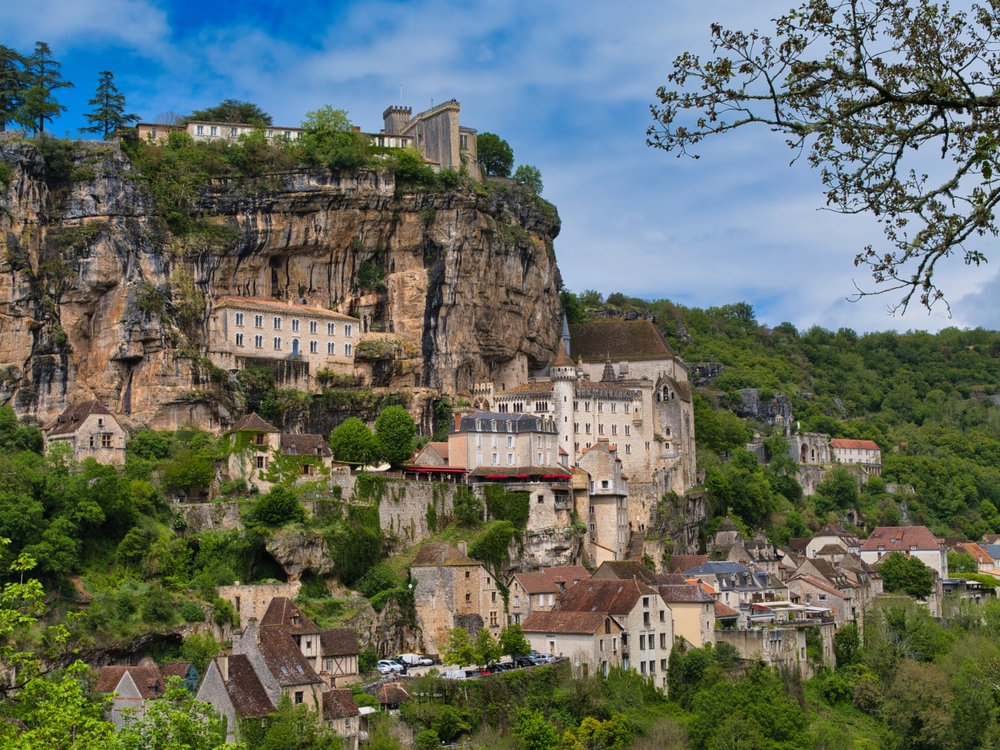
Clinging to the cliffside in the Alzou canyon, Rocamadour impresses with its urban layout, unique in the world. This thousand-year-old place of pilgrimage, a major stopover on the pilgrimage route to Santiago de Compostela, boasts sanctuaries, palaces and dwellings on several vertiginous levels towering 150 metres above the valley.
The Notre-Dame chapel houses the Black Madonna, venerated since the 12th century, while the Saint-Sauveur basilica and the cryptic Saint-Amadour church bear witness to the religious fervour of this exceptional site. The castle of the Lords of Rocamadour majestically crowns this sacred city, a UNESCO World Heritage site.
12. Perpignan and the Catalan Roussillon region
As the former capital of the Kingdom of Majorca, Perpignan has preserved an architectural heritage that bears witness to its glorious Catalan past. The Palace of the Kings of Majorca, a fortress-palace dating from the 13th and 14th centuries, dominates the city with its crenellated towers and Gothic courtyards of honour. The Cathedral of St John the Baptist, a remarkable Southern Gothic building, boasts sumptuous Baroque altarpieces.
The Castillet, a 14th-century fortified pink brick gateway, symbolises Catalan resistance and today houses the Casa Pairal (place de Verdun, 66000 Perpignan, rated 4.1/5 on Google out of 1200 reviews), a museum of Roussillon folk arts and traditions. The beaches of the Roussillon coastline, from Canet-en-Roussillon to Argelès-sur-Mer, complete the tourist offer of this region with its marked Mediterranean influences.
13. Sète, the unique island and its seafaring traditions
Nicknamed the “Venice of Languedoc” because of the canals that criss-cross the town, Sète cultivates a maritime identity that is unique in the French Mediterranean. This port city, founded by Colbert in the 17th century as the outlet for the Canal du Midi, perpetuates age-old traditions such as nautical jousting, a summer spectacle in which jousters compete on their traditional boats.
Mont Saint-Clair, 183 metres above sea level, offers exceptional views over the Etang de Thau, the Mediterranean and the Pyrenees. The marine cemetery, made famous by Paul Valéry, and the Paul-Valéry museum (rue François-Desnoyer, 34200 Sète, rated 4.2/5 on Google for 850 reviews) celebrate the memory of the local man and authentic Sète culture.
14. Aigues-Mortes, the royal bastide of Saint Louis
Founded by Saint Louis in the 13th century as a port of embarkation for the Crusades, Aigues-Mortes fascinates visitors with its intact ramparts encircling the rectangular town. This royal bastide, perfectly preserved since the Middle Ages, bears witness to the planned town planning of the Capetian era. The Tour de Constance, a 40-metre-high royal keep, was used as a prison for Protestant women from the Cévennes after the Edict of Nantes was revoked.
The “salins du Midi”, which have been in operation since ancient times, produce the fleur de sel of the Camargue in a landscape that changes colour with the seasons. This unique medieval town, surrounded by ponds and salt marshes, is a privileged gateway to the Gard Camargue and its pink flamingos.
15. Cahors and the Lot valley
The former capital of the Quercy region, Cahors unfurls its architectural treasures in a spectacular meander of the River Lot. The cathedral of Saint-Étienne, a Roman-Byzantine edifice unique in France with its oriental domes, is home to a 12th-century tympanum carved with striking beauty. Pont Valentré, a fortified 14th-century structure listed as a UNESCO World Heritage Site, is one of the finest medieval bridges in Europe, with its three defensive towers.
The vineyards of Cahors, renowned since ancient times for their tannin-rich “black wine”, are spread out over the limestone hillsides of the valley. Saint-Cirq-Lapopie, a hilltop village listed as one of the Most Beautiful Villages in France, majestically dominates the Lot valley with its perfectly restored Gothic and Renaissance houses.
16. The Occitan Pyrenees and their iconic peaks
The Occitan Pyrenees offer spectacular mountain scenery dominated by iconic peaks such as the Canigou (2784 m), the sacred mountain of the Catalans, and the Pic du Midi de Bigorre (2877 m) with its century-old astronomical observatory. The Gavarnie cirque, a UNESCO World Heritage site, impresses with its 1,400-metre-high rock walls and its 422-metre-high waterfall, one of the highest in Europe.
Lourdes, the world’s second-largest pilgrimage destination after Rome, welcomes six million visitors a year who come to venerate Our Lady of Lourdes in the shrines built around the Massabielle grotto. The peak of Anie (2504 m) and the Kakuetta gorges complete this exceptional natural heritage, which combines the pastoral traditions of the Béarn region with unspoilt wild landscapes.
17. Occitan gastronomy, between land and sea
Occitanie cultivates a generous gastronomy drawing its flavours from the diversity of its terroirs. Cassoulet, an emblematic dish based on white beans, duck confit and Toulouse sausage, is prepared according to the local traditions of Castelnaudary, Carcassonne and Toulouse. Languedoc-Roussillon wines, from Corbières to Minervois, via Saint-Chinian and Faugères, are the perfect accompaniment to this sun-drenched cuisine.
Brandade de Nîmes, aligot aubracien, tielle sétoise with octopus and oysters from Bouzigues all bear witness to the region’s culinary wealth. The colourful markets of Toulouse, Montpellier and Perpignan are brimming with local produce: goat’s cheese from the Causses, lavender honey, Lucques olives and Cévennes pélardon cheese make up this authentic Mediterranean palette.
18. Occitan festivals and traditions
Occitanie pulsates to the rhythm of prestigious festivals celebrating the arts, traditions and Occitan culture. The Festival d’Avignon, an international theatrical event in July, transforms the city of the Popes into the world capital of the performing arts. The Chorégies d’Orange offers operas and concerts in the exceptional setting of the ancient theatre, while Jazz in Marciac brings the village of Gers to life every summer with its Afro-American rhythms.
The férias of Nîmes and Béziers perpetuate Mediterranean bullfighting traditions in a uniquely festive atmosphere. The Occitan language, historically spoken throughout the south of France, is being revived through calandretas (schools in Occitan) and cultural festivals such as the Estivada in Rodez and the Troubadours de la chanson occitane.
In conclusion, Occitanie is an exceptional tourist destination, where its thousand-year-old heritage, magnificent landscapes and Mediterranean art of living form a harmonious symphony. From the summits of the Pyrenees to the shores of the Mediterranean, from the wild causses to the renowned vineyards, this multi-faceted region is an invitation to discovery and constant wonder. Whether you’re a history buff, a nature lover or an epicurean gourmet, Occitanie will meet all your expectations thanks to its extraordinary diversity and preserved authenticity. Let Navaway’s itineraries be your guide as you explore this fascinating region, which will never cease to surprise you at every turn.
FAQ
When is the best time to visit Occitanie?
The best time to visit Occitanie is from May to October, to take full advantage of the Mediterranean climate. Spring (May-June) and autumn (September-October) offer pleasant temperatures and fewer tourists. In summer, you can enjoy the beaches and festivals, while winter remains mild on the coast and allows you to discover the Pyrenean ski resorts.
How long does it take to visit Occitanie?
A minimum of one week is enough to discover the major sites (Toulouse, Carcassonne, Montpellier, Pont du Gard). For an in-depth exploration including the Pyrenees, the Cévennes and the coast, allow 15 days to 3 weeks. Navaway tours allow you to make the most of each city visit in 1 to 2 days per city.
What UNESCO sites are not to be missed in Occitanie?
Occitanie boasts 8 World Heritage sites: the Canal du Midi, the Pont du Gard, the city of Carcassonne, the episcopal city of Albi, the Causses and Cévennes, the Pilgrim’s Way to Santiago de Compostela, the Pyrenees-Mont Perdu and the prehistoric border property with Spain. These exceptional sites alone justify a trip to Occitanie.
How do you get around Occitanie?
The car remains the most practical way of exploring the region’s diversity. The TGV provides efficient rail services to the major cities (Toulouse, Montpellier, Nîmes, Perpignan). Urban public transport allows you to visit the historic centres, which are particularly well-suited to the Navaway walking itineraries that maximise the discovery of each town.
200 audioguided tours for cities all around the world
Download